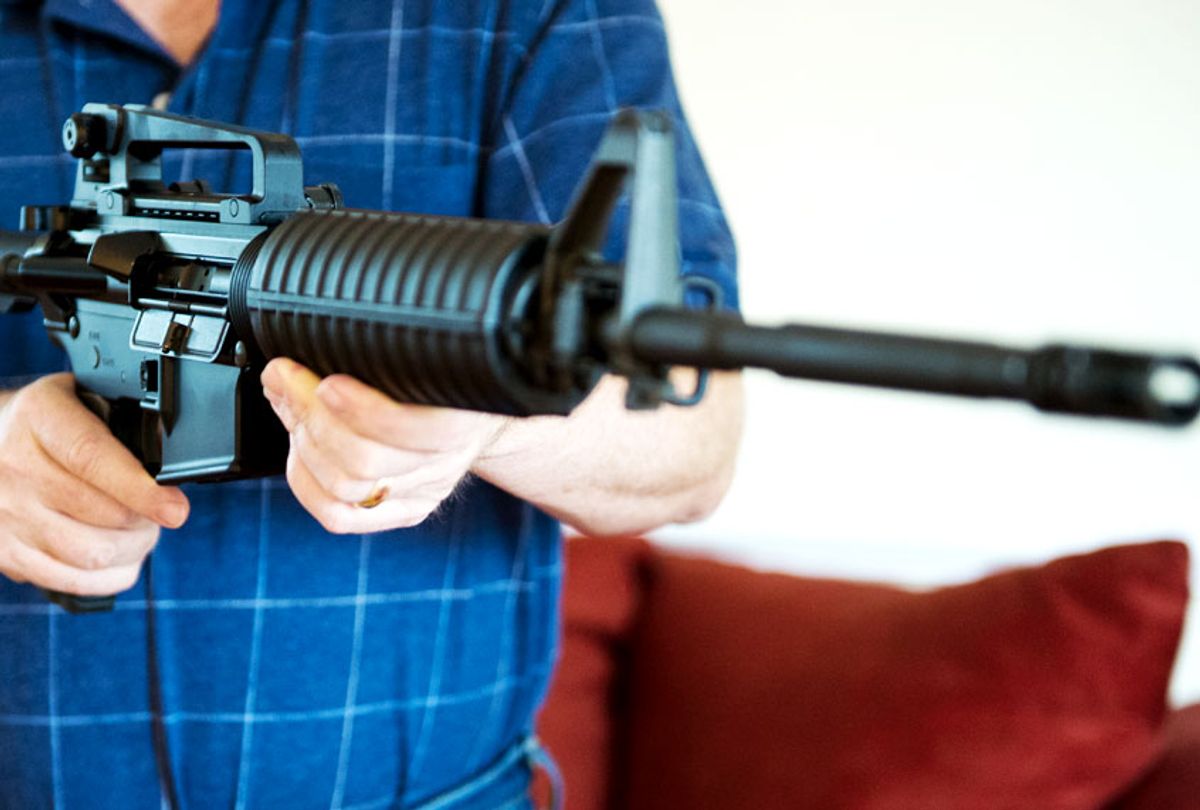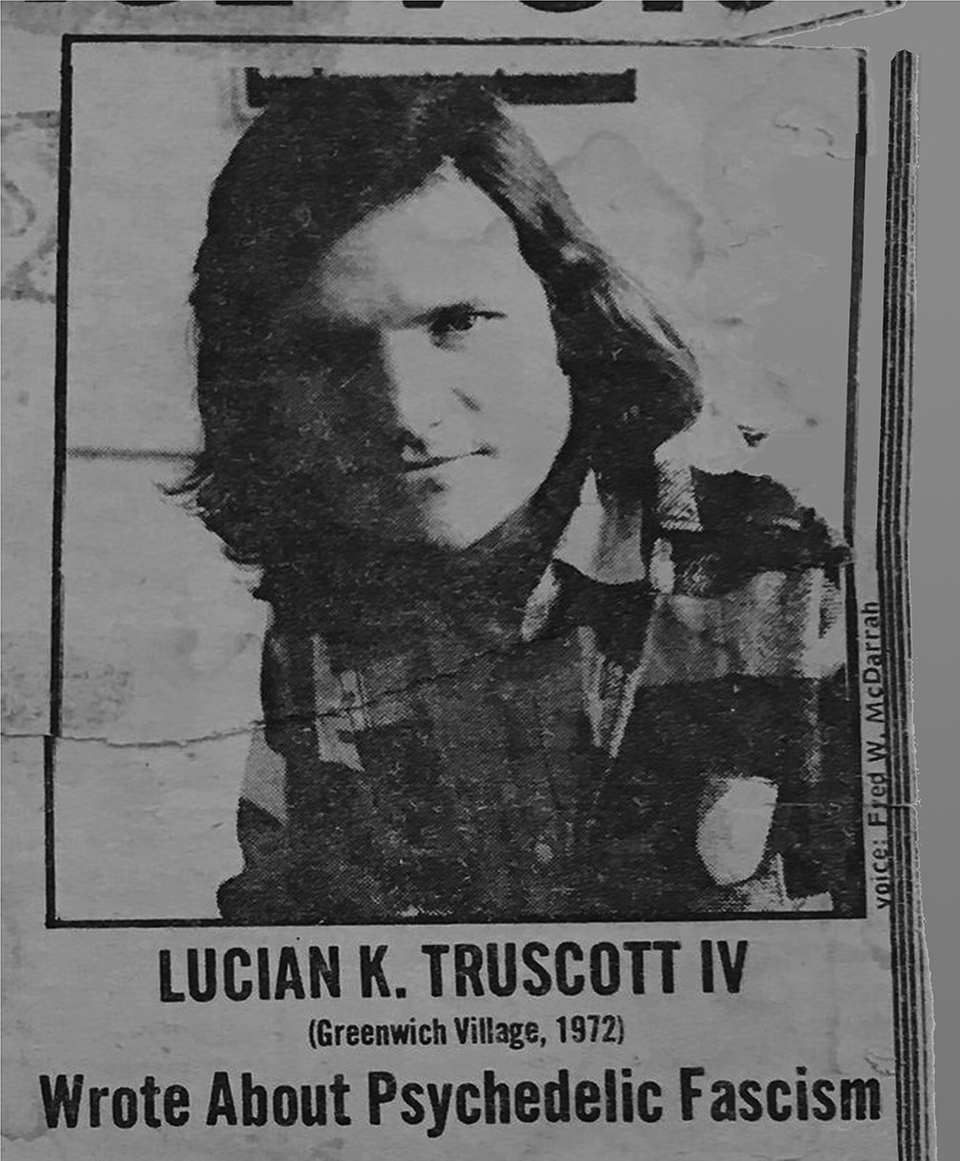General Truscott is a man of legend in the 3rd
Early life and military career[edit] Truscott was born in
Chatfield, Texas, to an
English father and an
Irish mother. Raised primarily in
Oklahoma, he attended grade school and a year of high school in the hamlet of Stella, near
Norman. At age 16, he claimed to be 18 and a high school graduate to qualify for teacher training, attended the summer term of the state
normal school in Norman, and received his teaching certification. He taught school before he decided to join the
United States Army in 1917, due to the
American entry into World War I. Truscott applied for officer training, falsely claiming to be a high school graduate who had completed the equivalent of a year of college. After completing the officer training camp at
Fort Logan H. Roots, he was commissioned a
second lieutenant in the
Cavalry Branch. During the war, he remained in the United States to patrol the border with Mexico, and served with the
17th Cavalry Regiment at
Camp Harry J. Jones,
Douglas, Arizona.

Truscott pictured here as a
captain sometime during the
interwar period.
He served in various cavalry and staff assignments
between the wars, including completion of the Cavalry Officers Course, followed by assignment as a Cavalry School instructor, and graduation from the
United States Army Command and General Staff College, followed by assignment to the school's faculty. He married Sarah "Chick" Nicholas Randolph, a descendant of
Thomas Jefferson Randolph and
Thomas Nelson Jr., on 27 March 1919.
World War II[edit] In July 1942, over seven months after the
Japanese attack on Pearl Harbor and the subsequent American entry into
World War II, Truscott was appointed to the staff of
IX Corps Area, at
Fort Lewis,
Washington.
[1] In 1942, Truscott, now a
colonel, was instrumental in developing an American commando unit patterned after the
British Commandos. The American unit was activated by Truscott (newly promoted to the rank of
brigadier general on June 19, 1942) as the
1st Ranger Battalion, and placed under the command of
Major William Orlando Darby.
In May 1942, Truscott was assigned to the Allied Combined Staff under Lord
Louis Mountbatten and in August, he was the primary U.S. observer on the
Dieppe Raid. The raid was primarily a Canadian operation, consisting of elements of the
2nd Canadian Infantry Division, with two British Commandos attached along with a 50-man detachment from the 1st Ranger Battalion. The Rangers were assigned to
No. 3 Commando,
No. 4 Commando, and 6 Rangers were spread out among the Canadian regiments. This was considered the first action by American troops against
German forces in World War II.
[1] On November 8, 1942, now a
two-star major general, Truscott led the 9,000 men of the
60th Infantry Regiment (part of the
9th Infantry Division) and
66th Armored Regiment (part of the
2nd Armored Division) in the landings at
Mehdia and
Port Lyautey in
Morocco, part of
Operation Torch under Major General
George S. Patton.
[2] Truscott took command of the
3rd Infantry Division in March 1943, and oversaw preparations for the
Allied invasion of Sicily, codenamed Operation Husky. He was known as a very tough trainer, bringing the 3rd Infantry Division up to a very high standard. At the age of 48, he was one of the youngest division commanders in the U.S. Army at the time. He led the division in the assault on Sicily in July 1943, coming under the command of the
Seventh U.S. Army, commanded by Patton, now a
lieutenant general. Here his training paid off when the division covered great distances in the mountainous terrain at high speed. The famous 'Truscott Trot' was a marching pace of five miles per hour over the first mile, thereafter four miles per hour, much faster than the usual standard of 2.5 miles per hour. The 3rd Infantry Division was considered to be the best-trained, best-led division in the Seventh Army.
After a brief rest to absorb replacements the division, in mid-September, nine days after the
initial Allied landings at Salerno, Italy, came ashore on the Italian mainland, where it
fought its way up the Italian peninsula, under the command of the
VI Corps, commanded by Major General
John P. Lucas. The VI Corps was part of Lieutenant General
Mark W. Clark's
U.S. Fifth Army. After crossing the
Volturno Line in October and fighting in severe winter weather around the
Gustav Line, which saw heavy casualties sustained, the division was pulled out of the line for rest and relaxation.
 GeneralSir Harold R. L. G. Alexander
GeneralSir Harold R. L. G. Alexander,
Commander-in-Chief (C-in-C) of the
Allied Armies in Italy (AAI), with Major General Lucian K. Truscott Jr., commander of the U.S. VI Corps, in the Anzio beachhead, Italy, 4 March 1944.
In January 1944, the division
assaulted Anzio as part of the U.S. VI Corps, which also included the
British 1st Infantry Division, along with two British Commandos and three battalions of
U.S. Army Rangers, Combat Command B of the
1st Armored Division and the
504th Parachute Regimental Combat Team. The operation, the brainchild of
British Prime Minister Winston Churchill, was intended to outflank, and potentially force the Germans to withdraw from their Winter Line defenses, which had considerably slowed Allied progress in Italy.
Lucas, the corps commander, initially decided not to push inland, as Allied commanders had intended, and Truscott's 3rd Division was soon engaged in bitter fighting and, again, suffering heavy losses as the Germans launched numerous
counterattacks to drive the Allies into the sea. With Clark, the Fifth Army commander, and
General Sir Harold R. L. G. Alexander,
Commander-in-Chief (C-in-C) of the
Allied Armies in Italy (AAI), growing increasingly worried about the situation, Truscott was appointed as Lucas's deputy commander and, after Lucas was dismissed on 17 February, was given command of the VI Corps. Truscott was succeeded in command of the 3rd Infantry Division by Major General
John "Iron Mike" O'Daniel, previously the Assistant Division Commander (ADC). At the age of 49, Truscott was the second youngest corps commander in the U.S. Army, behind only
J. Lawton Collins, then commanding
VII Corps in England. Clark, writing in his memoirs after the war, claimed "selected Truscott to become the new VI Corps commander because of all the division commanders available to me in the Anzio
bridgehead who were familiar with the situation he was the most outstanding. A quiet, competent, and courageous officer with great battle experience through North Africa, Sicily, and Italy, he inspired confidence in all with whom he came in contact."
[3] Following Anzio, Truscott continued to command VI Corps through the fighting up the Italian boot, helping in the final
Battle of Monte Cassino and the subsequent capture of Rome, just two days before the
Normandy landings. However, his command was then withdrawn from the line to prepare for
Operation Dragoon, the amphibious assault on southern France. On 15 August 1944, the VI Corps landed in southern France and initially faced relatively little opposition. The rapid retreat of the
German Nineteenth Army resulted in swift gains for the Allied forces and the
Dragoon force met up with southern thrusts from
Operation Overlord in mid-September, near
Dijon.

Truscott pins the Bronze Star on Captain Richard Wolfer, France, 25 October 1944.
A planned benefit of
Dragoon was the usefulness of the port of
Marseille. The rapid Allied advance after
Operation Cobra and
Dragoon slowed almost to a halt in September 1944 due to a critical lack of supplies, as thousands of tons of supplies were shunted to northwest France to compensate for the inadequacies of port facilities and land transport in northern Europe. Marseille and the southern French railways were brought back into service despite heavy damage to the port of Marseille and its railroad trunk lines. They became a significant supply route for the Allied advance into Germany, providing about a third of the Allied needs.
On 2 September 1944, Truscott was promoted to the
three-star rank of lieutenant general and in October he was appointed commander of the newly formed
Fifteenth Army, which was largely an administrative and training command.
[4] 
Truscott decorates
Japanese American soldiers of Company 'L' of the 3rd Battalion,
442nd Regimental Combat Team with the
Presidential Unit Citation, 4 September 1945.
Truscott's next command came in December 1944. He was promoted to command of the
U.S. Fifth Army[5] in Italy when its commander Lieutenant General Mark Clark was made commander of the Allied
15th Army Group, formerly the AAI. Truscott led the Fifth Army through the hard winter of 1944–1945, where many of its formations were in exposed positions in the mountains of Italy. He then led the army through the Allied
Spring 1945 offensive in Italy culminating in the final destruction of the German forces in Italy.
Post-war era[edit] Truscott took over command of the
Third Army from
General George S. Patton on 8 October 1945, and led it until April 1946. This command included the Eastern Military District of the U.S. occupation zone of Germany, which consisted primarily of the state of
Bavaria. When the
Seventh Army was deactivated in March 1946, Truscott's Third Army took over the Western Military District (the U.S.-occupied parts of
Baden,
Württemberg and
Hesse-Darmstadt).
Will Lang Jr. from
Life wrote a biography on Truscott that appeared in the October 2, 1944, issue of that magazine.
After leaving the U.S. Army, Truscott began work on his book
Command Missions, which was published in 1954 (
ISBN 0-89141-364-2), and
The Twilight of the U.S. Cavalry (
ISBN 0-7006-0932-6). The latter book was published after his death by his son, Lucian III, in 1989.
[6] In 1954, Congress passed Public Law 83-508, which promoted several World War II senior officers who had exercised responsibilities greater than their rank; as a numbered army commander, Truscott carried out the duties of a
four-star general, and the 1954 law promoted him to
general on the retired list.
[6] Truscott helped evaluate officers as a member of the War Department Screening Board. Then in 1948–1949, he spent a year as the Chairman of the Army Advisory Board for Amphibious Operations, at
Fort Monroe, Virginia. It was between meetings of this board that he began assembling the material for his two books.
[7] Central Intelligence Agency[edit] In 1951,
Walter Bedell Smith, Director of the
Central Intelligence Agency (CIA), appointed Truscott as "Special Consultant to the United States Commissioner" in Frankfurt, Germany. However, this was simply a cover for his real assignment as senior Central Intelligence Agency representative in Germany. Truscott had been placed in charge of cloak-and-dagger operations in a vital part of Europe. This only came to light after declassification of a secret memorandum in 1994.
[8] In 1953, President Eisenhower approved CIA Director Allen Dulles' recommendation that General Truscott be appointed the CIA's Deputy Director for Coordination. This appointment meant that Truscott was now controlling the agency's rapidly expanding network of agents worldwide. His responsibilities included facilitating the overthrow of governments in Iran and Guatemala.
[9] Truscott was involved in planning
Operation PBSUCCESS, the CIA mission to overthrow Guatemalan President Jacobo Árbenz. According to Harry Jeffers' biography, Truscott was instrumental in convincing Eisenhower to support PBSUCCESS with air power.
[10] However, another biography by William Heefner suggests that specifics of Truscott's involvement cannot be substantiated.
[11] Truscott left the CIA in 1958. He wrote nothing about his service in the CIA in
Command Missions, and there is nothing about his CIA activities in his papers at the George C. Marshall Library.
[12] Death and legacy[edit] Truscott died on 12 September 1965, in
Alexandria, Virginia.
[13] On 29 April 1966, Truscott Hall, a bachelor officers' quarters at the United States Army War College, was named after him. On 17 August 1974,
[13] Sarah Truscott, his wife, died and was buried next to him at
Arlington National Cemetery.
[14] In 2012, he was honored at his birthplace hometown of Chatfield.
[15]
 www.salon.com
www.salon.com 






